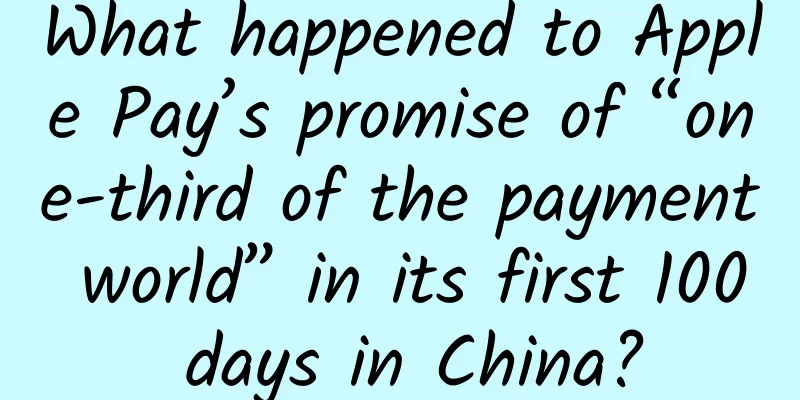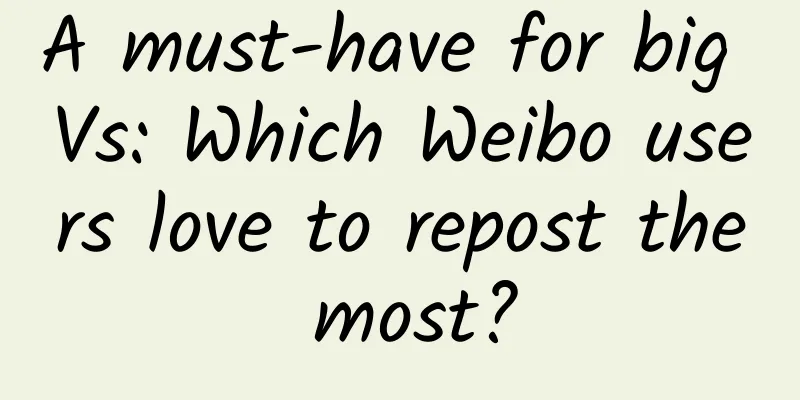What happened to Apple Pay’s promise of “one-third of the payment world” in its first 100 days in China?

|
"Since I started using Apple Pay, I only have to pay a little over one dollar for a six-dollar yogurt every day. Today is a new low!" "Bank ATMs have opened the Apple Pay cash withdrawal function. Using mobile phones to withdraw cash has taken another big step towards eliminating bank cards!" "The card machine at the Family Mart downstairs breaks down every time they have promotions on Wednesdays and Thursdays. I really wonder if it's intentional. But if you think about it, it's understandable. Apple Pay is probably losing money with a 50% discount across the board." "I went to the supermarket to check out and took out my phone to pay with Apple Pay, but it took me a long time to pay, so I finally opened Alipay ." All of the above are jokes about Apple Pay that I have seen on Weibo . Since its official entry into the Chinese market on February 18 this year, Apple Pay has gone from being highly anticipated at the beginning to being calm at present. It seems that it has not formed a three-way split with Alipay and WeChat Pay. At present, the more realistic problem for Apple Pay is how to quickly overcome the "unsuitability" among Chinese users and gain a payment market share commensurate with its mobile phone ownership. As of today (June 7), Apple Pay has entered the Chinese market for more than 100 days. However, interviews and investigations by reporters show that although 18 mainstream Chinese banks have become Apple's partner banks, and these banks have invested real money to promote Apple Pay in China through various promotional activities, so far, while the "Apple + bank card" has been widely praised, it is not popular in the real market. After years of scenarios and user cultivation, the strong position of Alipay and WeChat Pay in the Chinese market may not change in the short term. Apple Pay still has a long way to go if it wants to have a third of the payment world. In fact, on February 18, Apple Pay was well received when it officially entered the Chinese market. On the same day, 38 million bank cards were bound to it. However, data shows that by the end of 2015, only 82.19 million iPhone 6 and above models were sold in Greater China. In other words, when it first entered the Chinese market, about one-third of iPhone 6 and above users had opened Apple Pay, which is not a low number. So, after 100 days, how is the actual usage? So far, no third-party organization has released market data for Apple Pay in China. Instead, Huawei Pay and Samsung Pay, which are in the same camp, have begun to support competitors' code scanning payment. On June 5, according to Economic Observer, Alibaba and UnionPay Online are negotiating on the issue of opening up payment channels for Taobao, but the specific details are still to be determined. The reporter of Daily Economic News asked Alipay for confirmation, but the relevant person said that they were not aware of it. The reporter also asked Alibaba Group for confirmation, but it did not respond to the above matter. Tan Qianyun of the Internet Finance Department of China E-Commerce Research Center pointed out that if the cooperation is successful, it will become a trend in the industry and open up the door for other third-party payment companies to further cooperate with UnionPay and even banks. ●Experience: Enjoy life without cards and cash What would it be like to live without cards and cash? The reporter recently went out with only his mobile phone to have a simple experience. Of course, the first thing to do is to prepare. Like most people, the reporter's mobile phone had been linked to Alipay and WeChat early on, so this time he specifically linked it to Apple Pay, but found that the binding process was still a bit complicated. For breakfast, FamilyMart and other supermarkets basically support Alipay, WeChat and Apple Pay. The reporter has seen mobile breakfast stalls in Beijing that can use Alipay and WeChat, but this time I didn't succeed when using Apply Pay, so I used Alipay instead. For taxis, I used the taxi app to quickly get a taxi. When paying, I found that I could use Alipay and WeChat, but not Apple Pay. The reporter used WeChat Pay this time. When shopping at Carrefour, Alipay, WeChat and Apple Pay can all be used. This time I successfully used Apple Pay. For lunch, the reporter randomly asked several small restaurants and found that they basically all accepted Alipay and WeChat payments, but Apple Pay could not be used. The above-mentioned living conditions of ordinary people like us who only carry mobile phones when going out are envied by Americans and Japanese. The Wall Street Journal once reported on the current situation of mobile payment in China. The article said that in some places in China, it is almost possible to completely abandon cash and only use mobile phones to pay, whether it is dining, paying water, electricity, gas, financial management, shopping, rent, etc., you can use mobile phones to complete the payment. Japan's Fuji Sankei Business Daily also stated that China has become a country with developed financial technology, and mobile phone payments have become the norm. However, in addition to the mature Alipay and WeChat Pay, similar to the reporter's experience, the media investigation found that when asked about Apple Pay, many supermarket clerks either answered "no training yet" or "our hardware does not support it yet". Some merchants even asked consumers to sign the receipt again after paying with their mobile phones. Most customers are not aware of the existence of Apple Pay, or said that there are many rules and regulations for opening Apple Pay, and the payment speed is not as fast as advertised. ●Scenario: Apple Pay’s natural threshold Why does Apple Pay always seem inconvenient or not widely used in actual applications? This is related to the inherent threshold of this payment method. WeChat Pay and Alipay both cover all mainstream operating systems in the market, which means they basically cover all smartphones. At the same time, QR code payment, face-to-face payment, transfer, and red envelope functions can basically allow users to complete them without the help of POS machines or other terminals. To use Apple Pay, three conditions must be met first: iPhone 6 and above, bound credit card, and POS machine that supports contactless payment. Based on the fact that Apple phones account for about one-third of the Chinese smartphone market, this has already excluded two-thirds of non-Apple phone users and some Apple users of models below iPhone 6. More importantly, the application scenarios that Apple Pay can cover are far less than those of Alipay and WeChat Pay. The latter have previously carried out large-scale land grabbing to cultivate user habits. From shopping malls and supermarkets to convenience stores and even snack stands, offline payment scenarios have been occupied by Alipay and WeChat Pay. Of course, the natural threshold of Apple Pay also provides a natural segmentation of consumer groups. People who can use this payment method have relatively higher purchasing power. Therefore, Apple Pay focuses on payment security and excellent user experience, which is also a path for promotion. However, Apple Pay still needs to work hard to achieve a better payment experience. ●Background: Apple Pay + bank cards launch high-end defense war Apple Pay came to China on February 18 this year. According to the data on Apple's website, 19 banks have become its partners. There are two reasons for the arrival of Apple Pay: First, Apple Pay has not grown well globally. According to the data of research company Timetric, its global transaction amount in 2015 was 10.9 billion US dollars, while the transaction amount of Alipay and WeChat Pay in 2015 was 1 trillion US dollars. Therefore, Apple is in urgent need of a share of China's huge payment market. Second, for traditional Chinese banks, the mobile payment field has been occupied by Alipay and WeChat Pay for a long time. The world has suffered from Qin for a long time, and a payment product is urgently needed to prevent the market from being further occupied. Chen Hudong, special researcher at the China E-Commerce Research Center and head of Oriental Electronic Payment, believes that to some extent, the timing of Apple Pay's entry into China is more appropriate because domestic consumption habits have already been formed. "For banks, choosing to cooperate with Apple Pay is a powerful weapon to promote mobile payments. NFC is also expected to replace traditional card transactions, which is an opportunity for both banks and Apple Pay. However, the domestic mobile payment landscape has been formed. In the payment business chain, WeChat Pay and Alipay are both quite mature, user habits have been formed, and the online market is saturated. It is difficult for Apple Pay to grab more benefits from these two giants. But from the perspective of different mobile payment transaction methods, the market occupied by Alibaba and Tencent is mainly online, and offline will become the focus of competition." Chen Li, assistant analyst of the Internet Finance Department of the China E-Commerce Research Center, said. Chen Hudong also said, "In fact, the share of near-field payment in China is relatively small. Compared with Alipay and WeChat QR code payment, Apple Pay's entry into China can only improve China's payment model, and it does not have the ability to subvert QR code payment." Chen Hudong believes that Apple products have a large number of customers in China. According to the "China Mobile Internet Industry Report for the Third Quarter of 2015", Apple ranked first in the number of smart mobile device users in the third quarter of 2015, accounting for 33.4%. Currently, third-party payment platforms in China generally require a network environment. When the network environment is not good, the experience will be reduced. Near-field payment only requires approaching the POS terminal and touching the Touch ID with your finger to complete it instantly, and the process is simplified. After Apple Pay enters China, its primary potential customers for near-field payment will cover a user group of tens of millions. Despite this, Chen Li believes that Apple still faces many challenges in entering China: 1. From high-amount consumption to medium- and low-amount consumption, both WeChat Pay and Alipay start from low-amount and high-frequency use. Therefore, as a new mobile payment company in China, Apple Pay should also use this as a starting point to accumulate users; 2. At present, online and offline are almost monopolized by Alipay and WeChat Pay. Whether Apple Pay is willing to use more incentives to increase user usage, and whether consumers are willing to pay for an additional payment channel, remains to be considered; 3. Apple Pay belongs to NFC payment, and the carrier is a smartphone. The average person holds the same phone for about two years. In other words, the user conversion cost of using NFC payment is high. Several major operators including UnionPay are strong supporters of NFC payment, but UnionPay has always had a low presence in the mobile payment market. In addition, for those users who are used to using Android phones, Apple Pay cannot enter; 4. Scenario restrictions. Alipay and WeChat Pay have developed not only as a payment tool, but more as a life service platform, but Apple Pay only acts as a virtual card package. In addition, from the perspective of its partner UnionPay, it has always lacked effective Internet scenarios. The Goldman Sachs report also pointed out that although Apple Pay's entry into China provides consumers with another payment method option, it still uses the existing bank card system to process transactions. Apple Pay is only a defensive weapon for banks in the offline payment market, and its implementation faces challenges. As a winner of Toutiao's Qingyun Plan and Baijiahao's Bai+ Plan, the 2019 Baidu Digital Author of the Year, the Baijiahao's Most Popular Author in the Technology Field, the 2019 Sogou Technology and Culture Author, and the 2021 Baijiahao Quarterly Influential Creator, he has won many awards, including the 2013 Sohu Best Industry Media Person, the 2015 China New Media Entrepreneurship Competition Beijing Third Place, the 2015 Guangmang Experience Award, the 2015 China New Media Entrepreneurship Competition Finals Third Place, and the 2018 Baidu Dynamic Annual Powerful Celebrity. |
<<: How long will Apple's decline continue? Can iPhone 7 turn the tide?
Recommend
Competing for popular "property projects" and abandoning "unfinished buildings", how did hermit crabs become "real estate transaction" tycoons?
The hermit crab is small in size, with an appeara...
Essential for overseas promotion: What are the global advertising channels?
On March 20, AppsFlyer released the "Eighth ...
Learning this method can save lives at critical moments! Today I will teach you step by step
Speaking of CPR Many people feel familiar yet str...
The Chaos in the Marketing Industry from the Plagiarism of Audi's Commercial Advertisement
On May 21, 2022, Audi released a commercial adver...
What is the lowest price per gram of good Cordyceps sinensis?
As a precious tonic medicine, Cordyceps sinensis ...
British police need training for fighting swans? This is no joke
Recently, a British police station announced that...
Query the price of Artair Real Estate Mini Program agent. How much is the price of Artair Real Estate Mini Program agent?
How much does the Ateler Property Agency Mini Pro...
Talk about the hidden rules of App operation
First, let’s deconstruct the position of App Oper...
K12 Online Education: Yuanfudao Product Analysis
This article aims to help you understand the curr...
Strategies for protecting children's health during flood prevention
Author: Li Linlin, Chief Physician, Affiliated Ho...
A review of the "obsolete" designs of smartphones that few people born after 2000 know
Last weekend, I accompanied my parents to China M...
Hello, Server Swift
Since Apple officially released an open source ve...
Google's quantum computer runs 100 million times faster than traditional computers
What? Google's own quantum computer is 100 mi...
Review of 2016: Who are the top 10 most frustrated mobile phone manufacturers?
2016 is about to end. This year, the growth rate ...
There is a new breakthrough in the "bottleneck" technology. What is the use of "hand-torn steel" that can be torn apart easily?
"Flat, thin, smooth, glossy and hard, as thi...






![Tiye Yaya's 2nd iPad illustration course will end in April 2021 [the picture quality is OK and there are courseware brushes]](/upload/images/67cc13d8d6b12.webp)


